Tarot block 1
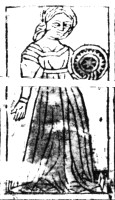 |
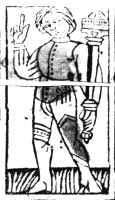 |
 |
||
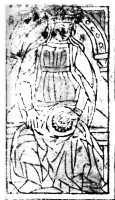 |
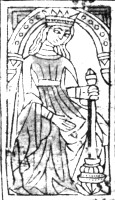 |
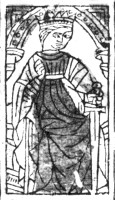 |
||
A group of five closely related decks of woodcut playing cards of 16th or late 15th century north Italian origin, among these a tarot deck, survive in the form of several fragments of uncut sheets of cards.
The largest collection is located in Szépművészeti Múzeum (Museum of Fine Arts), Budapest. Duplicates from this collection are held by the Metropolitan Museum of Art, New York; a smaller number were once in the collection of one Theodore B. Donson, New York, but was later sold at an auction by Christie's. Together these cover four of the decks; the fifth deck is represented by a group of fragments in Museo Fournier de Naipes (the Fournier Playing Card Museum), Vitoria-Gasteiz.
All fragments are incomplete pieces of one or more imprints from ten different printing blocks. Taken together, the fragments of each group give an almost complete picture of the block they are printed from. Some blocks belong together, forming parts of the same deck. Pictures of the Budapest/New York fragments are published in volumes I and II of Stuart Kaplan's Encyclopedia of Tarot. I follow his convention of numbering the blocks formed by these fragments 1–8. To distinguish the Fournier blocks from these, I refer to them as i and ii.
All blocks are of the same size, with four rows of cards on each. Blocks 1, 2 and 6 differ from the rest in having five cards per row instead of six, as each card is slightly wider. Blocks 1 and 2 together contains all trumps and court cards of a tarot deck, as well as two unused positions in the grid. The irregular distribution of cards between these two blocks makes it obvious that they belong to the same deck, and not two similar ones.
Block 6 contains all cards from ace to ten in the suits of swords and batons. A similar block with the suits of cups and coins would in combination with block 1, 2 and 6 form a standard 78-card tarot deck. It is therefore of significant interest to decide whether or not block 6 indeed is a part of the same deck as 1 and 2.
On the whole, this seems highly probable. Not only is the size of the cards and the way the cards are laid out on the block identical, but some stylistic details correspond more closely between these than with any of the other blocks. The clearest example of this is the grassy ground at the bottom of the aces in block 6, which is strikingly similar to that on the knights, knaves and several trumps in blocks 1 and 2, whereas this area is treated in various different ways in the other cards.
If it was possible to somehow reconstruct the missing block with ace to ten of cups and coins, we would have a complete woodcut tarot from the 15th century – the earliest example of such.
With six cards per row, each of the other blocks have 24 cards. Two pairs of such blocks together form a full 48-cards deck with the structure of Spanish decks: ace to nine plus knave, knight and king of each suit. Two more blocks contain half such a deck each, both with all court cards and the number cards of one suit. The last block contains only tens of all four suits, each repeated six times. Stylistically, these cards match one of the 48-card decks, completing it to a 52-card deck as used in Northern Italy at the time.
The number cards from 2 to 10 are similar enough to be copies or cruder imitations of a common source. For swords and batons, this source is clearly the tarot deck; when adopted to the narrower cards, the left and right edges of the design was trimmed away. Most of the court cards are independent designs in the same style, but fortunately the page of cups from the complete deck contains an only slightly altered copy of the corresponding tarot card, of which only the right half survives.
The design of the cards from the missing block of the tarot deck are probably at least partially preserved in these cards, with the exception of the aces which were probably more elaborate as in the two preserved suits.
An overview of the cards of each block.
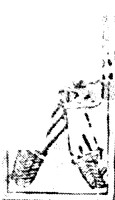 |
 |
 |
 |
 |
 |
||||
 |
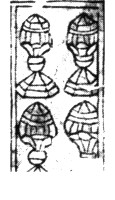 |
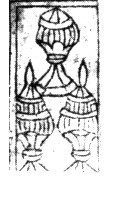 |
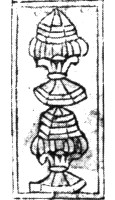 |
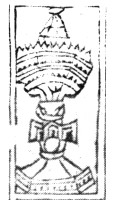 |
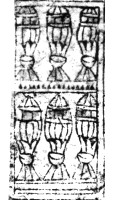 |
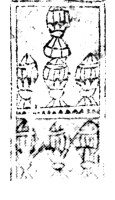 |
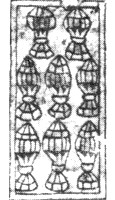 |
 |
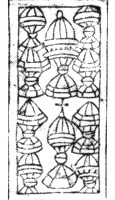 |
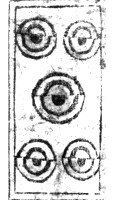 |
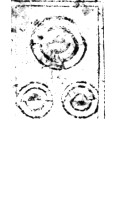 |
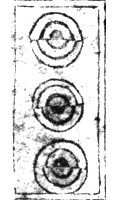 |
 |
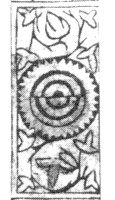 |
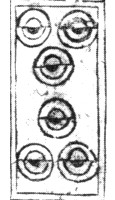 |
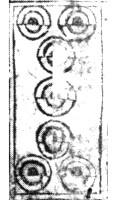 |
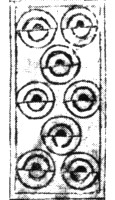 |
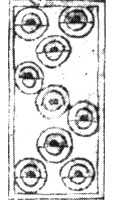 |
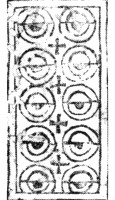 |
Reconstructions of the trumps by Robert Place.